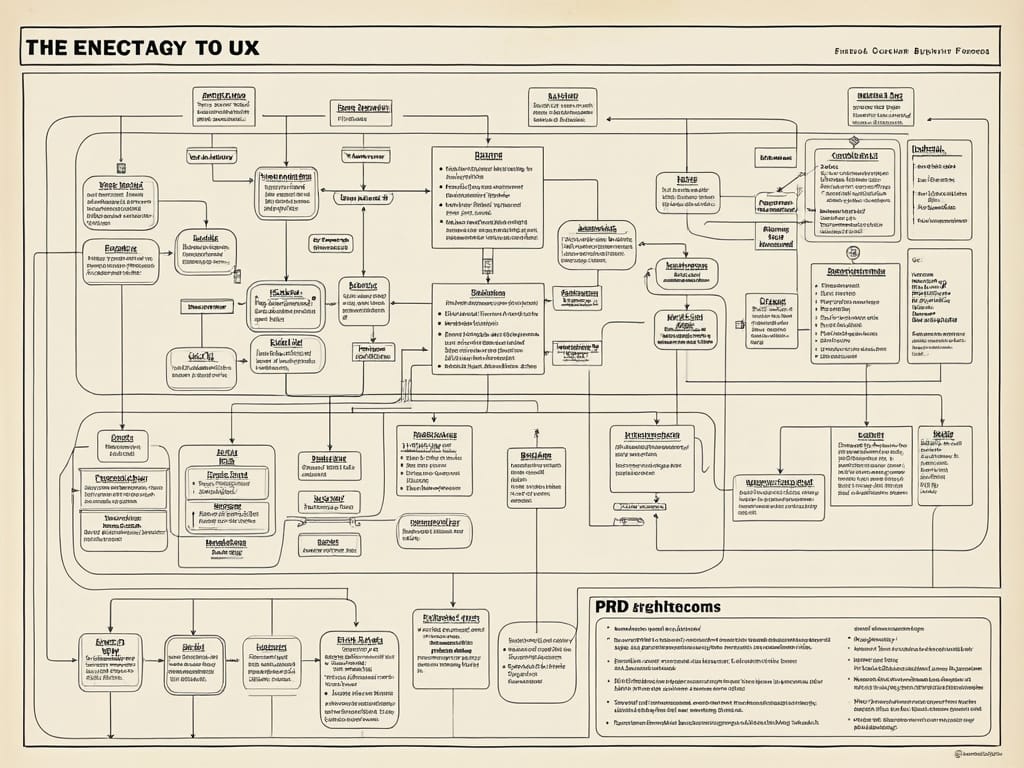From UX Designer to UX SME - the Art of Writing Product Requirements Documents
Master the Product Requirements Documents (PRDs) to elevate your skills as a UX Professional. By contributing and embed user insights, UX designers help to prevent team disconnects, and drive product decisions. Position your UX self as strategic partners in enhancing and improving business value.

In 2024, the role of UX professionals has expanded far beyond crafting interfaces and ensuring usability. Many UX tasks and deliverables are now surfacing earlier in the project lifecycle, well before the design stage. One critical, yet often overlooked, skill for UX practitioners is the ability to write and contribute to a Product Requirements Document (PRD). A well-crafted PRD not only lays the foundation for a product's development but also ensures that user experience is seamlessly aligned with technical execution from the outset.
The Value of PRDs for UX Professionals
Moving beyond pixels to drive product strategy and integrating research is a critical skill set. For UX designers looking to elevate their impact, contributing to PRDs is essential. It acts as a Rosetta Stone for translating user needs into actionable development goals.
By taking an active role in writing or contributing to PRDs, UX professionals can:
- Embed user-centric insights from the start.
- Prevent disconnects between design, development, and product management.
- Ensure that user experience considerations drive product decisions.
- Advocate for UX research activities that deliver business value through real-world user data.
Elements of a Great PRD (with a UX Focus)
While there are many ways to write a PRD, a great one is clear, structured, and comprehensive. Here are the essential components, along with considerations for how UX professionals can shape each of the eight key sections:
1. Overview
- Problem Framing: Clearly describe the problem, substantiated by user research data or feedback. These insights can come from user research, product reviews, and support calls. In organizations that support fact-finding, a discovery phase with key stakeholders usually reveals problems worth framing as PRD opportunities.
- Contextual Background: Align the project with broader company objectives and industry trends. Conducting a market scan of competitor products or related industries can uncover additional considerations worth documenting. This step not only justifies the project's importance but also helps frame the context for stakeholders.
2. Goals
- Product Aims and Outcomes: Outline high-level goals from a user-centered perspective, ideally located at the nexus of business capabilities and user needs.
- User Experience Focus: Emphasize how the solution will enhance user experience. Every product should have a user strategy or success metrics. As UX advocates, ensure that these goals align with the broader strategy and genuinely contribute to the product's success. Avoid compliance for compliance's sake; instead, pursue goals that add real value.
3. Success Metrics
- Define Success: List criteria reflecting how effectively the product meets user needs. Where there aren't existing product owners or stakeholders defining metrics, UX professionals can suggest success metrics like signups, user retention, or reduced abandonment.
- Quantitative and Qualitative Indicators: Align metrics to the product's lifecycle. Long-term products focus on customer acquisition and new market penetration, while short-term products often prioritize cost reduction. Knowing which phase the product is in will inform the most relevant metrics.
4. Assumptions and Dependencies
- Assumptions: Document any hypotheses regarding user needs and preferences. Often, assumptions are best revisited with input from other departments to validate or refine them.
- Dependencies: Identify teams or resources that will impact product delivery. The unknowns are always a risk, so it's helpful to work backward from support teams to understand dependencies. In the long run, shaping these conversations enhances UX strategy skills and broadens your impact on product development.
5. Product Requirements
- User Stories: Illustrate end-user interactions with clear user stories. Early on, rough sketches or user flows are ideal for capturing requirements before final designs are created. Diagrams like user swim lanes or UML flowcharts can effectively communicate these processes.
- Acceptance Criteria and Prioritization: List all requirements with clear acceptance criteria. Collaborating with support and QA teams on this section can reveal critical pain points and guide which fixes will yield the most significant return on investment.
6. User Experience (UX) Mockups
- Wireframes and Mockups: Normally, this is the only place UX professionals would be involved in a traditional PRD. However, being engaged from the start ensures that when you do reach the mockup stage, you're well-aligned with other teams.
- Design File Links: Centralize design assets and provide links for easy access. A well-organized PRD with embedded links will ensure a smoother collaboration process throughout the product lifecycle.
7. Questions and FAQs
- Common Queries: Address frequently asked questions or feature impacts early on. While the "what-about" questions can pile up, this section helps streamline communication across teams and saves time by preemptively answering recurring questions.
- Documenting Patterns: If your organization lacks a common repository for such FAQs, consider compiling questions from past PRDs as a project of its own. This can provide valuable insights for future documents.
8. Out of Scope
- Preventing Scope Creep: Clearly define what will not be addressed to maintain focus. Worth noting, if UX professionals are heavily contributing to this section, it might indicate a need for a dedicated product owner.
- Collaborative Clarity: Engage other team members in this discussion. Outlining what's out of scope helps prevent misunderstandings and keeps the team aligned on immediate priorities.
Crafting a PRD with a UX Focus
When UX professionals lead or significantly contribute to a PRD, they ensure that it serves as more than just a technical specification. It becomes a comprehensive roadmap that reflects user needs, pain points, and the desired journey through the product. This approach offers several benefits:
- Fosters alignment among stakeholders.
- Minimizes misunderstandings between design, development, and product management.
- Helps deliver a product that meets both business objectives and user expectations.
- Demonstrates the leadership and strategic thinking of the UX team.
Conclusion
As the role of UX professionals continues to evolve, mastering the art of writing and contributing to PRDs becomes increasingly crucial. By integrating user-centric insights and design thinking into the product development process from its earliest stages, UX professionals can significantly enhance their impact and influence. The ability to craft comprehensive, user-focused PRDs not only elevates the final product but also positions UX professionals as key strategic partners in the product development journey.
In today's competitive landscape, this skill set is invaluable for UX professionals looking to drive innovation and create truly user-centered products.





